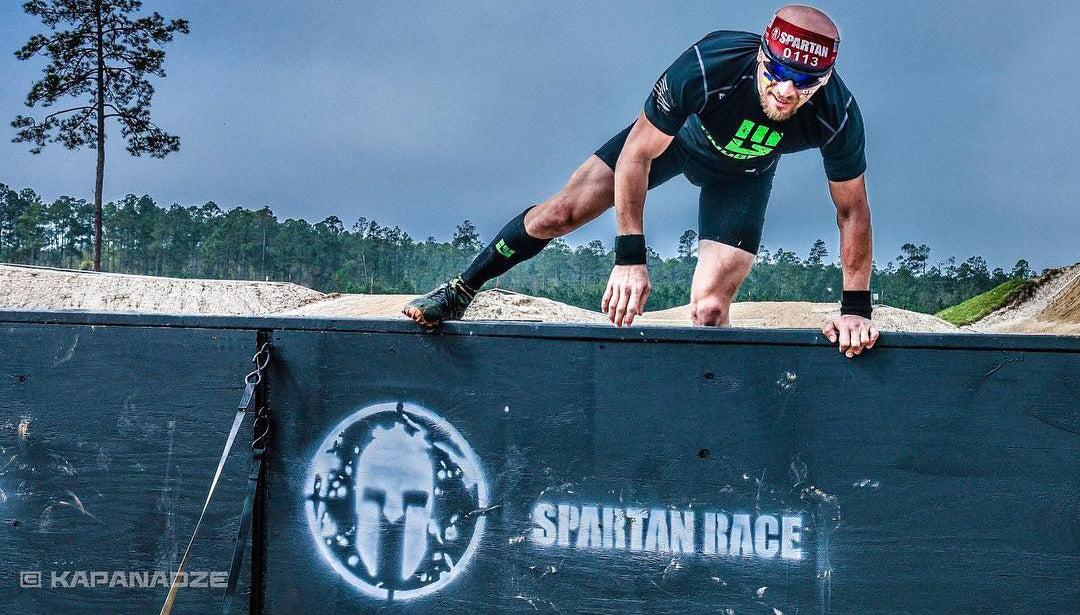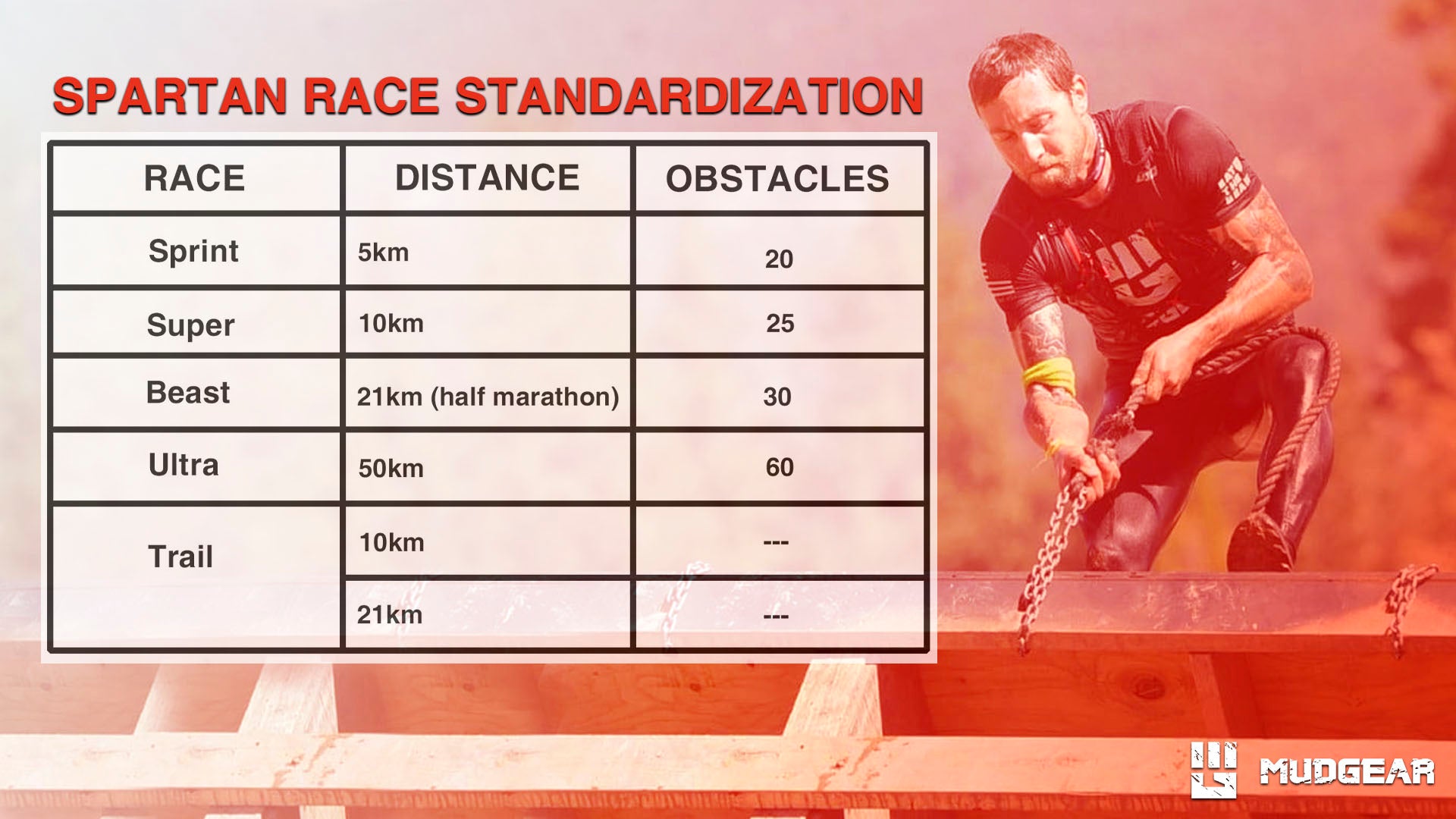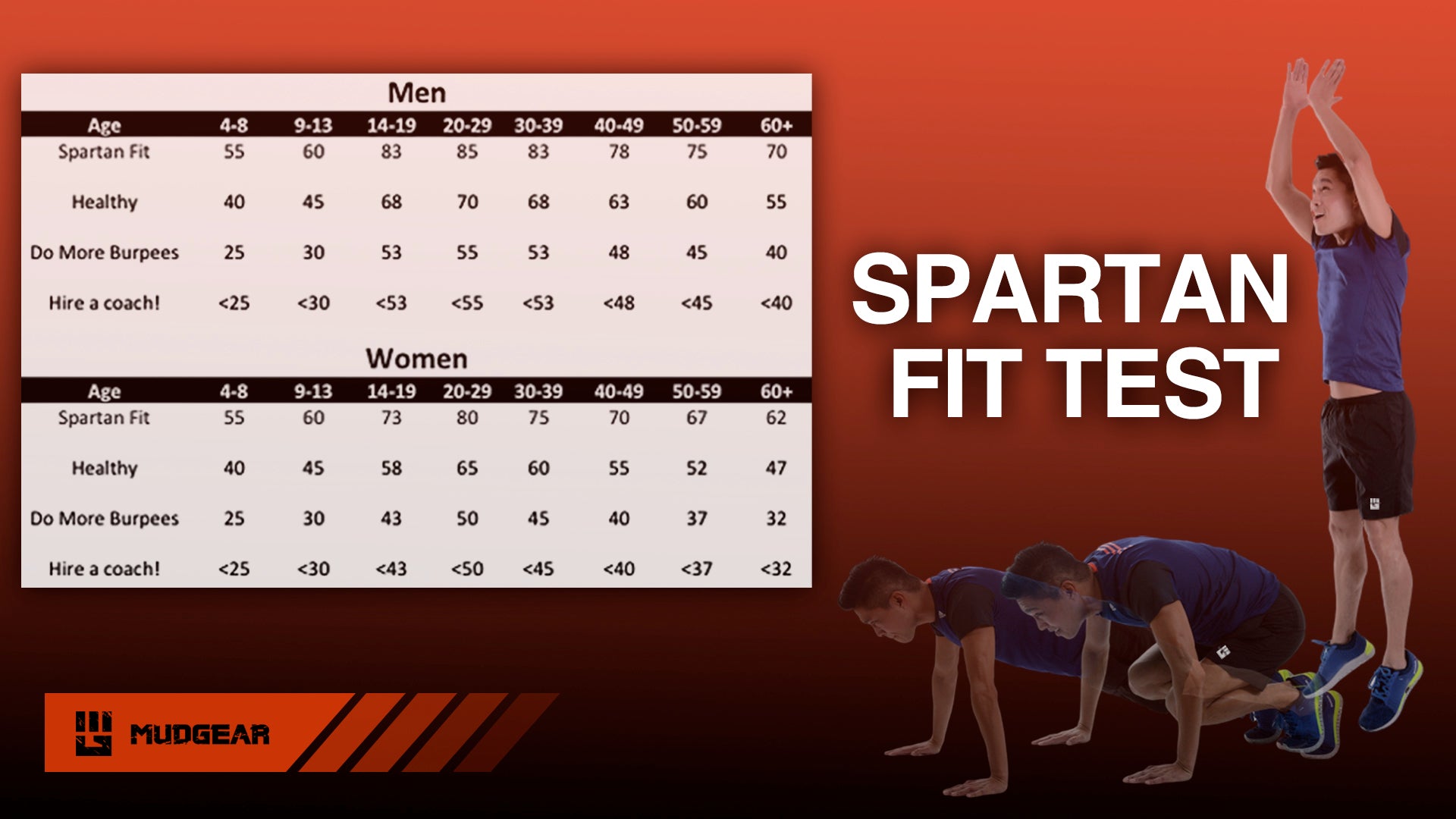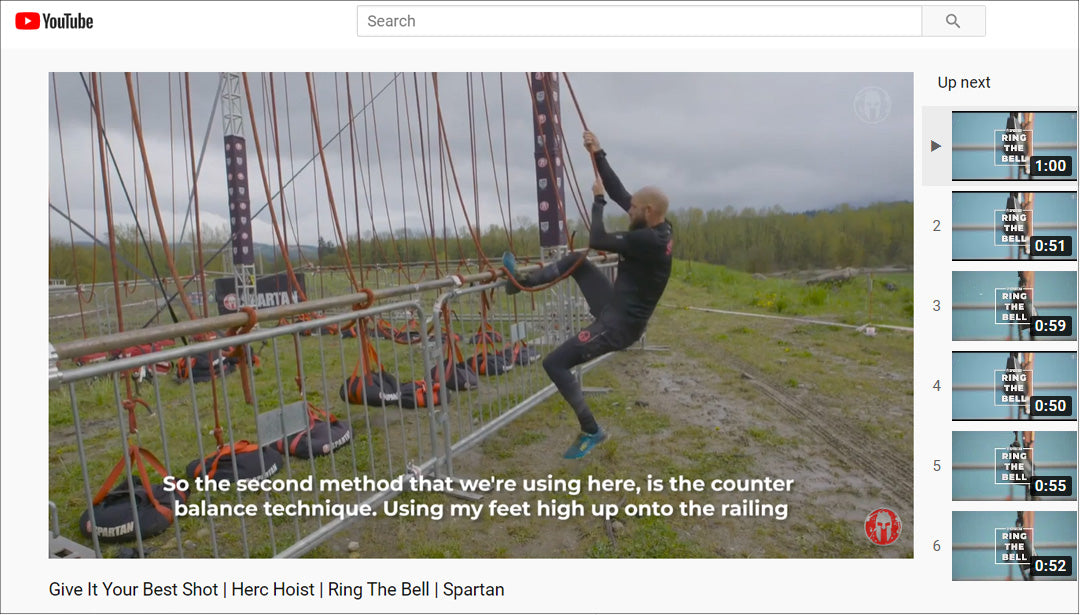How to Train for a Spartan Race
The key to training for a Spartan Race is to understand the event, assess your goals and conditioning, and prepare your mind and body.

- Research the Course, Rules, and Obstacles
- Assess Your Goals and Conditioning
- Get Ready to Run with Focus on Endurance, Speed, and Hills
- Prepare for the Obstacles by Strengthening Your Core, Grip, and Flexibility
- Prepare Your Mind for Race Day
Spartan Race is the most popular Obstacle Course Race (OCR) series in the world. Its main mission, as founder and CEO, Joe De Sena puts it, is to “rip 100 million people off the couch.” However, mental and physical preparation is vital. Follow these five, primary training steps paying close attention to the details in each step, and you will undoubtedly become ready to conquer your first Spartan Race.
STEP 1) Research the Course, Rules and Obstacles
The decision-makers at Spartan work hard to provide all the tools and information essential to your safety. At the same time, they want you to be challenged... not pampered. That’s why they’ll sometimes surprise, confuse, and even scare their participants. Your job is to counterpunch by doing your homework while still expecting the unexpected.
The Course
For years, Spartan published the estimated distance and the number of obstacles for its multiple race types. However, it was not uncommon for an actual racecourse to be a mile or two longer and with considerably more obstacles than the published estimate. SURPRISE! Fortunately, beginning in 2020, Spartan standardized the distance and number of obstacles in each race type.

Most race weekends will include at least two race types between Saturday and Sunday with the longer of the two on Saturday. So, if you know of a Spartan Race you’d like to attend, be sure to see what kind of races are being offered on the weekend in question.
Note: Stadium Races (Stadion) are always Sprints (5K/20 obstacles).
Every race location/weekend has its own landing page at Spartan.com. Unfortunately, those landing pages provide very little detail about the actual course. There should, however, be some general description of the terrain.

Once you register for your race, you will start getting email correspondence from Spartan. In the final days before the event, you may receive an email update that includes more course info including a map of selected obstacles. If not, keep an eye on Spartan’s Facebook/Instagram pages. A lot of participants never look at the map, but it can be helpful to know what to expect.
The Rules
Many OCR fans love the “run free” spirit of the sport. However, Spartan actually has a lengthy rule book that is often updated for improved clarity, efficiency, fairness, and above all else, safety. Every participant is encouraged to read The Official Spartan Rule Book, but it is especially important if you plan on running in a competitive heat. There are few things more disappointing than being disqualified from winning for failure to follow a rule you overlooked in your rule book. Ignorance is bliss, but it won’t refund your registration fee.
Some rules never change and are worth adopting to memory.
- Always Ring the Bell. Whether you’re crossing the multi-rig, the z-wall, Tyrolean traverse, or climbing a rope, you have not successfully completed the obstacle until you ring the bell. If you fall off the obstacle without ringing the bell, you must pay the penalty (usually burpees). Back in Spartan’s neanderthal days, kicking or headbutting the bell was allowed and could even trigger a battle cry of “AROO” from fellow, inspired Spartans. Today, those same antics could result in disqualification (and possible concussion). Just ring the bell with your hands. It’s always allowed.
- Do Your Burpees. They’re not meant to be fun. Burpees are Spartan Race’s trademark penalty for participants who fail an obstacle. Judges will watch competitive heats to make sure participants do their burpees. However, even in the open heat, it’s considered bad form and a lack of integrity to skip out on burpees. Earn your medal; do your burpees.
- The Spear Has to Stick. The spear throw is one of the most challenging obstacles that will probably be at every Spartan Race you’ll ever run. You only get one throw to stick the spear into the target. It’s not enough to hit the target. It has to stick. Otherwise, burpee time.
- Don’t Drop the Bag. The Hercules Hoist will require you to raise heavy sandbags using a suspended rope and pulley system. Racers get so relieved to successfully hoist the weight to the top of the obstacle, they’ll sometimes let go of the rope and watch the sandbag come crashing to the earth. Big No-No! Stay in control while you ease the heavy sandbags back to solid ground. Otherwise, it’s your face in the dirt as you do another set of burpees.
The Obstacles
Researching the obstacles that may be at your race can boost your confidence and give you a competitive advantage over other first-time racers. The Spartan website provides video explanations and demonstrations of most of the potential obstacles (at least 20). Spartan’s YouTube channel also features video tutorials of some of their obstacles.
Some of the best tips on obstacle completion comes from the athletes who race them via social media and on their individual coaching websites. So, if there’s an athlete you admire, search specifically for his or her content. You might even be able to reach out to experienced athletes as there is a noticeable spirit of camaraderie throughout the OCR community.
STEP 2) Assess Your Goals and Conditioning
Spartan prides itself on pushing participants to a point of discomfort no matter how hard they train. There is a fine line, however, between discomfort and finding yourself in a situation that is dangerously over your head. Part of knowing what you’re getting into involves having a realistic view of your own capabilities.
Your Goals
“Why am I doing this?” Some variation of this question can be heard at every Spartan race - usually in jest, but occasionally with agonizing sincerity. The question can lead to valuable self-discovery. However, the most successful racers arrive already prepared to run with purpose. They have already defined their goals and will recognize success when they achieve it.
- Compete or Complete. A valuable first question when assessing your goals is whether you’re aiming to compete or merely complete. Your answer will determine which race division you should enter. True competitive races are separated into Elite and Age Group divisions and reward top finishers with prizes and special recognition. The Morning/Afternoon (Open) Divisions are designed for participants not interested in competing, but who are eagerly focused on completing the race. For these participants, a medal, t shirt, and the feeling of accomplishment are reward enough.
- Time and Ranking. Whether you’re running in a competitive heat or not, you may want to set time or ranking goals. For instance, you may decide you’d like to finish the race in two hours (or three, four, etc.). It will be difficult to guesstimate how long the race should take if you’ve never done it before. However, there’s no harm in asking around to get an idea how long others typically take on the course. You can also set a ranking goal where you worry less about actual time but aim to finish in the top 50%, 20%, etc. Considering the thousands of participants who will be running on race day, being a top 100 overall finisher is no small feat. While these goals are arbitrary outside of the Elite and Age Group competitive heats, they could become the driving force you need to do your very best.
- Every Spartan Race has a “Results” station where participants can find out their time and current ranking. The ranking may change as other heats finish. However, at the end of the day, you should be able to find out how you stacked up against everyone else.
- Results are also posted on the Spartan website usually on the Monday following the race.

- Obstacle Completion. Another fun and common goal on race day is to determine how many obstacles you’ll permit yourself to fail. More so, this goal comes in the form of how many burpees you plan to do. Since obstacle failure usually results in 30 burpees, a participant who sets a goal of 100 burpees or less means he/she won’t fail more than three obstacles.
- Some people set goals concerning specific obstacles. For instance, one guy may achieve his goal of sticking his spear throw. To him, that matters more than the seven obstacles he failed. No matter how much he aches after doing over 200 penalty burpees, he can’t stop smiling about that spear throw.
- Of course, the ultimate obstacle goal is what we call a “clean race.” That means 100% obstacle completion (no fails / zero burpees).
Whether your goals are based on competition, time, rank, or obstacle completion, be sure to challenge yourself.
Your Conditioning
Part of setting and achieving your race day goals is having a realistic comprehension of your current, physical capabilities and limitations. Spartan race has devised a simple fitness assessment called the “Spartan Fit Test” based on the number of burpees you can do in 5 minutes.

The number of burpees you can complete will indicate your fitness and endurance level. This assessment is a standard tool used among Spartan SGX Coaches to determine whether their clients are ready for a Spartan Race. In all actuality, you don’t have to be “Spartan Fit” to be able to complete a race. It is, however, a good goal to strive for as you prepare.
STEP 3) Get Ready to Run.
Most people will agree that the obstacles are Spartan Race’s main attraction. However, above all else, this is still a footrace. That means getting there is half the battle. As difficult as hanging, carrying, and crawling may be on their own, don’t underestimate the overriding challenge of running 5 - 50 km. The run alone invites cramps, blisters, and overall pain and fatigue. While MudGear’s Obstacle Course Racing Socks can eliminate the first two, avoiding the other discomforts will require a different type of preparation. That’s why it’s important to include proper endurance, speed, and hill training in order to become ready to run on race day.
- Endurance Running. While you may never be required to run more than a mile between obstacles, even short distances can take their toll on your body when not prepared for endurance running. Ideally, you’ll want to develop a running regimen over several weeks in which you continually increase your distance from week to week. If time allows, it would be beneficial to build an endurance that allows you to comfortably run the full race distance without obstacles. That way, the addition of obstacles on race day will be challenging but manageable.
- Even if you never run many miles in a day, strive to develop a fast jog or running pace during which, you can maintain an active heart rate for at least 40 minutes.

- Speed Running. While increased speed is a natural byproduct of your distance running, you’ll want to train your body to access bursts of speed when the time requires. Running sprints will condition your body to go faster for brief periods when the terrain demands more of you or when you need to pass an opponent.
- A good starting point is to run as fast as you can for 50 meters. Walk back to your starting point and run it again. Continue until you’ve run 10 sprints. Afterwards, evaluate how you felt during the run and how easy it was to recover after each sprint. Based on your evaluation, consider maintaining, increasing or decreasing the sprint distance the next time you run.
- Hill Running. Many Spartan Races are held on hilly and even mountainous terrain. So, don’t limit yourself to flat-surface running. Running up and down hills will work otherwise unchallenged muscles. It will also help you manage your breathing and make you aware of foot placement and ankle stability. Become familiar with the muscles required to negotiate a steady climb. If you are using a treadmill, work your way up to jogging at least 5 minutes at 12% incline. However, only running outdoors will prepare you for the focused control needed to safely bomb down a steep hill.
Gear Up
Gear Up: MudGear’s 12-Week Fitness Plan was designed to help new obstacle course racers develop the speed, endurance, and overall fitness required to crush a Spartan Race. The plan encourages participants to begin their first week of training by running for 30 minutes or as long as you can without walking. When you must walk, do it for 1 minute; then, start running again. Repeat until you get to 30 minutes. Record distance and how you feel. Upon the last weeks of the 12-week plan, participants will repeat the run sequence (this time for 40 minutes) and note the improvements. Learn more about Gear Up! from MudGear.
STEP 4) Obstacle Preparation.
Your ability to successfully complete and eventually master the obstacles at Spartan Race will depend largely on technique and some specialized strengths.
- Technique. While we’ve already mentioned researching obstacle techniques on the Spartan website and on YouTube, it’s hard to know for sure whether you’re ready until you’ve experienced the obstacles firsthand. Spartan doesn’t let participants on the course before their scheduled heats. There are, however, still a few ways to practice obstacles.
- OCR Gyms/Facilities. You don’t have to wait until a race weekend to practice. Here is a list of permanent OCR facilities where you can train on obstacles comparable to those you’d find at a Spartan race.
- Spartan Open House. Select Spartan races kick off the weekend with a Friday Night Open House where attendees can try some of the obstacles under the direction of trained coaches.

- Volunteer. Another way to see and maybe even test certain obstacles prior to race day is by volunteering to help build the course. Other perks may include merchandise and a free race. Check your Spartan Race event page for volunteer opportunities.
- DIY Obstacles. Consider building your own obstacles to train with whenever you’d like. Search for do-it-yourself (DIY) instructions for building walls, spears, hoists, and other staple Spartan obstacles.
- Specialized Strengths. Strong men and women alike have learned the hard way that overall strength does not necessarily translate into the tools needed for Spartan success. Gear Up: MudGear’s 12-Week Fitness Plan focuses especially on core strength, grip strength, and flexibility/coordination. Regardless of your history in sports or overall athleticism, you will be better prepared for your Spartan Race if you focus on these specialized strengths.
- Core Strength. Many Spartan obstacles require more than bulging biceps can deliver on their own. Heavy carries, low crawls and obstacle walls demand excellent core strength.

- Master the Burpee. It’s more than a Spartan novelty. The popular exercise works the glutes, hamstrings, triceps, chest, calves and of course, the core. Surprisingly, a standard burpee as found on Wikipedia will not include push-ups. However, Spartan defines their expectation within The Official Spartan Rule Book and on various video tutorials.
- Grip Strength. This specialized strength has taken on a larger role in Spartan Races over the last several years. Gear Up! features unique but proven grip strength exercises including Eagle Talons, Gorilla Grip and Quick Release. However, most grip exercises fall into one of two categories.
- Heavy Hold. This is a simple way to strengthen your grip throughout the day. Hold 2 heavy dumbbells at your side. You can stand still, walk with them, and even take them with you as you go about your day. Take this to the next level by pulsating your grip as tightly as you can. This will tire your hands out for the purpose of eventually strengthening your grip.
- Dead Hang. Grab a pull up bar and see how long you can hold on without your feet touching the floor or any other body part finding support. Overtime, you can challenge yourself more by adding time, weight, or both. Eventually, you’ll want to be able to move around while hanging (maybe monkey bars at a nearby park). Consider training with MudGear’s MadGrip Obstacle Race Gloves. Otherwise, expect and except blisters on your hands as a badge of honor.
- Flexibility/Coordination. Certain obstacles like Olympus and the Inverted Wall require as much flexibility and coordination as they do grip and core strength. Further, your ability to expand your gate can help when side stepping up a wall or stretching for your next footing on Helix.

- MOGA. In Gear Up!, Coach Mo demonstrates 10 movements and stretches collectively known as MOGA 2.0 that strengthen the core and improve overall flexibility. Towards the end of the plan, participants are introduced to MOGA 3.0.
STEP 5) Mental Preparation.
One final and often undervalued step before taking on a Spartan Race is getting mentally prepared. Specifically, you want to develop GRIT. It’s an internal quality respected throughout the Spartan community in which you seek out and push through difficult and uncomfortable challenges in order to accomplish a mission, help a fellow human, or for your own personal growth.

The idea is to voluntarily do difficult, uncomfortable and maybe even scary things so that you’re mentally prepared when unexpected challenges pop up in real life. Still, the question remains. How does one develop GRIT? That's something you’ll have to figure out. Seriously, sit down right now and put together your plan for developing GRIT using these Dos and Don’ts guiding principles.
- DO Something That Scares You.
- DON’T Choose Comfort Over Adventure
- DO Get Comfortable Being Uncomfortable
- DON’T Give Up
- DO Keep Going
- DON’T Give Excuses
CONCLUSION
Spartan Races can be life-changing for participants of all ages and fitness levels. By doing proper advance research, realistically assessing your goals and condition, becoming a competent runner, and becoming mentally and physically prepared for the race’s long run and multiple obstacles, you will undoubtedly have a more meaningful experience. Hopefully, you will leave the event feeling great about yourself and ready to sign up for another.
For more detailed training to prepare you for your Spartan Race, consider signing up for Gear Up: MudGear’s FREE 12-Week Fitness Plan. The plan includes detailed instructions, video examples, and weekly emails of encouragement. Get ready to race with MudGear!
READERS ALSO LIKED THESE ARTICLES:

















Leave a comment